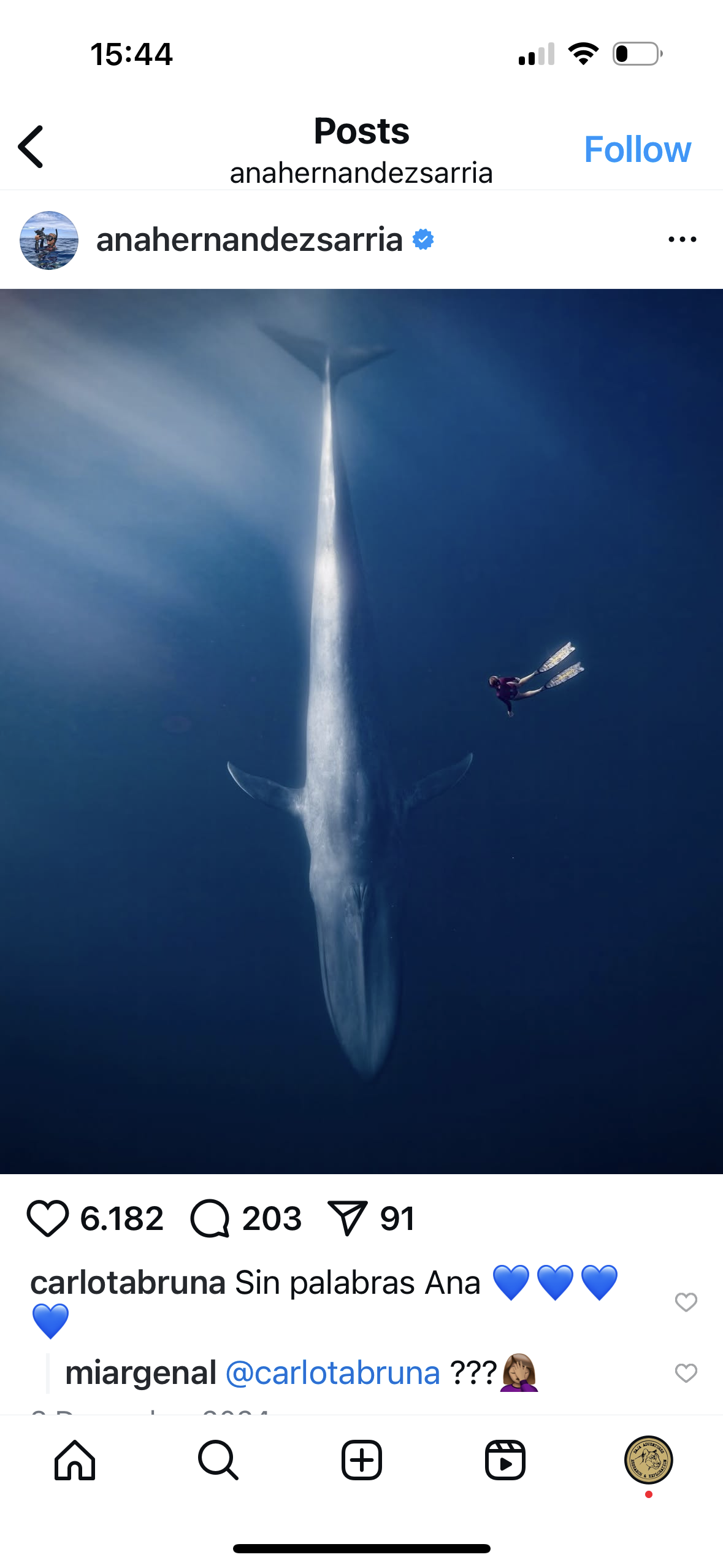The dark side of cetacean tourism in Baja California Sur, Mexico
No species in nature sabotages its own ecosystem for spectacle—only humans turn the ocean into a stage. Cetaceans, with over 50 million years of evolution, are masters of communication, navigation, and balance. Biomimicry invites us to learn from their intelligence, not disturb it. Yet the viral hunt fuels a dangerous trend: boats chasing whales, drones overhead, and illegal swimming—all violating regulations designed to protect these species and their habitats. This isn’t awe. It’s harm. Nature is not a circus. Don’t be the clown that breaks the law and the balance.
Protecting Baja California Sur’s cetaceans: Fighting illegal tourism and promoting responsible practices
Baja California Sur (BCS) Mexico, is internationally renowned for its rich marine biodiversity, especially its whales, dolphins, and whale sharks, attracting tourists from around the world. However, illegal and unregulated cetacean tourism is a serious and growing threat,not only to these marine species but also to local communities, conservation efforts, and the sustainable future of the region.
Mass, unregulated, and illegal tourism: Threatening cetaceans and marine ecosystems
Baja California Sur’s waters are vital for cetaceans as breeding, calving, nursing, feeding, resting, and socializing habitats. During these stages, whales form social bonds, nurture and protect their young, and build the energy reserves needed for long migrations.
However, mass, unregulated, and illegal tourism—including excessive boat traffic, unauthorized swim-with-whale tours, and use of spotter planes—disrupts these crucial behaviors. Human presence and noise pollution can cause stress, interrupt feeding and nursing, and force whales to abandon important habitats, ultimately threatening reproductive success and population health.
Why regenerative tourism is essential
We live in a world facing an unprecedented loss of biodiversity. Traditional tourism, which often focuses merely on economic gain, can have neutral or even negative impacts if unmanaged. Now more than ever, it is critical that tourism in places like Baja California Sur is not just sustainable, but regenerative, actively restoring and enhancing marine ecosystems and communities.
What regenerative tourism means for cetaceans
Always a positive impact: Every visitor and operator must ensure their activities benefit cetaceans, their habitats, and local communities. Neutral or negative impacts are unacceptable in a time of global biodiversity decline.
Restoration and stewardship: Regenerative tourism goes beyond “not harming”—it helps rehabilitate marine areas, supports conservation research, funds local monitoring, and raises awareness about marine protection.
Respectful encounters: Operators need SEMARNAT-authorized non-extractive tourism permits, must display the official whale watching flag, ensure guides are NOM-09 certified, and strictly follow regulations on distance, speed, and group sizes.
Community and conservation First: Profits must support local livelihoods and conservation efforts, not just economic extraction.
The path forward
Baja California Sur’s natural heritage can only endure if tourism always gives back—to wildlife, the environment, and coastal communities. Every visitor has the power to help regenerate these precious ecosystems:
Only use authorized, community-based operators committed to positive environmental outcomes.
Ask how your tourism dollars are being reinvested into habitat restoration, research, or local welfare.
Avoid and report any businesses engaging in harmful, unregulated, or illegal activities.
Choose to be part of tourism that heals, restores, and regenerates. In an era where biodiversity is vanishing, we must demand that travel always leaves a positive legacy—for cetaceans, for communities, and for future generations.
If you wish to visit Baja California Sur and be part of truly legal, sustainable, and regenerative tourism around cetaceans, please contact our team. We are ready to help you enjoy this wonder in a way that ensures a lasting, positive impact.
The problem: illegal and unregulated activities
Around 25% of the world’s cetacean species are currently threatened with extinction, facing pressures such as habitat loss, pollution, climate change, and disruptive human activities—including unregulated tourism. Despite clear Mexican federal laws, including NOM-131-SEMARNAT-2010 and the General Wildlife Law, illegal whale watching operations persist in Baja California Sur. Key illegal or harmful activities include:
Offering whale watching in unauthorized zones or outside the official season (official season: December 15–April 15).
Swimming with whales, strictly prohibited throughout Mexico.
Use of spotter planes or other aircraft to locate whales, which is banned.
Operations by unlicensed guides who lack certification, do not pay taxes, and offer no support to local communities.
Several popular areas like La Ventana and MagBay remain outside official whale watching designations, enabling unregulated and sometimes illegal excursions to flourish.
Official regulations and best practices
Mexico regulates whale watching through NOM-131-SEMARNAT-2010 and requires that:
All whale watching boats must hold a non-extractive tourism permit issued by SEMARNAT, granting legal authorization to operate in specific areas during set seasons.
Operators must fly the official whale watching flag, issued annually by SEMARNAT, clearly showing they have valid permits. This flag must be displayed while operating.
Captains or / and guides must hold the NOM-09 certification, ensuring they’re trained in whale watching best practices and wildlife protection.
Operations are only allowed in officially designated areas, including:
Ojo de Liebre Lagoon
San Ignacio Lagoon
Adolfo López Mateos
San Carlos
Bahía Magdalena
Santa María
Magdalena Islands
Loreto Bay
Cabo San Lucas
Vessel distance and approach rules:
Boats under 10 meters must stay at least 60 meters from whales.
Boats over 10 meters must keep at least 80 meters distance.
Boats without permits must maintain at least 800 feet (~244 meters).
Only a maximum of 4 boats can approach the same whale or group.
Speed limits apply: maintain a constant cruising speed under 9 km/h (5 knots) and never faster than the slowest whale in the area.
Approach whales from the side or slightly behind, never head-on or encircling.
Swimming, snorkeling, kayaking, jet skiing, scuba diving, or towing objects near whales is forbidden.
Authoritative enforcement ensures these guidelines minimize disturbance and protect cetaceans' natural behaviors.
Consequences of illegal Practices:
Illegal whale watching harms cetaceans and communities:
Behavioral stress: Whales disturbed repeatedly may reduce feeding and resting, change migration routes, or avoid critical habitat.
Threat to vulnerable groups: Mothers with calves are especially sensitive; disturbance risks calf survival.
Economic drainage: Non-local, unlicensed guides often evade taxes and do not reinvest in local communities.
Tourist risk: Untrained operators endanger visitors.
Environmental damage: High boat traffic and noise degrade marine ecosystems.
Enforcement and challenges
Enforcement is more robust inside Marine Protected Areas (MPAs) like the Vizcaíno Biosphere Reserve and Bahía de Loreto National Park.
Unregulated zones such as Magbay and La Ventana see higher illegal activity due to weak oversight.
Authorities impose fines, suspend or revoke permits, and pursue legal action when possible, but limited resources and competing priorities hamper consistent enforcement.
The Nakawe Project & “Wildlife Over Likes” campaign
Due to the rise of influencers and operators promoting illegal and harmful wildlife interactions, including some major brands and freediving personalities, the Nakawe Project launched the “Wildlife Over Likes” campaign. This campaign calls for:
Prioritizing animal welfare over social media fame.
Rejecting tours offering swimming with whales or those using spotter planes.
Supporting licensed operators who follow legal regulations and local conservation efforts.
Raising public awareness on the damaging consequences of illegal tourism.
We are deeply concerned that prominent brands and figures in freediving communities continue to promote activities that harass cetaceans and undermine conservation. Many individuals profit from these unethical tours rather than supporting protection efforts.
How you can help: Choose responsible tourism
Book only with SEMARNAT-authorized operators who display the official whale watching flag.
Confirm that captains and guides hold the NOM-09 certification.
Ensure the tour respects distance, speed, and vessel limits.
Avoid any tours offering swimming with cetaceans or aerial spotting.
Support local guides who contribute to community welfare and conservation.
Report illegal activities and unpermitted tours to PROFEPA.
Encountering the whales and dolphins of Baja California Sur is a privilege that demands responsibility. Ethical, regulated tourism protects these magnificent species and benefits local communities.
If you want to visit Baja California Sur and be part of legal, sustainable, and regenerative cetacean tourism, please contact our team. We are happy to help connect you with responsible operators and support unforgettable experiences that respect wildlife and nurture conservation.
Together, we can keep Baja’s marine life thriving—putting Wildlife Over Likes.









